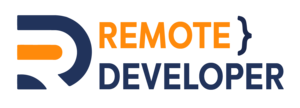Agile Project Management is an iterative project planning in delivering a project during development. The iterative or Agile Life Cycle is composed of multiple incremental steps and collaboration until the completion of the projects. It aims to achieve improvements throughout the process rather than at the end of the cycle.
Unlike the waterfall method, Agile Software Development applies a level of practicality and quick adaptability to changes. It advocates flexibility and independence when delivering or finishing a product. This method focuses on developing pieces of the software and not the whole application.
Importance of Agile Software Development
Agile Software Development helps teams evolve from the traditional methods while maintaining an efficient delivery of business value. The collaborative culture and flexible nature of Agile facilitate members in improving their efficiency and understanding their specific roles better in the process. Similarly, Agile Software Development is favored by technology leaders due to the following compelling benefits:
1. Superior quality product
With Agile Software Development, stakeholders feel confident that a product is of high quality and market standard since developers performed several testing throughout the development cycle. Any potential issues were already detected and fixed as needed.
2. Customer satisfaction
In Agile, the customer remains involved in the decision-making and development process, which leads to better client retention. In the traditional method, clients can only participate during the planning and product launching stage. Usually, they are not directly working during the execution phase.
In addition, including the client during the development stage and accommodating their feedback can help deliver what the customer wants. With the Iterative Agile Process, developers can include any changes the customer wants in connection to their business, brands, or market needs.
3. Better control
Agile allows managers to have better command over the project development due to the feedback incorporation, transparency, and sprints. This simple, agile process can ensure quality and achieve the requirements throughout the project’s implementation phase. Similarly, stakeholders remain involved in the development process and the daily or weekly progress report.
4. Reduced risks and Improved Predictability
Agile works in small sprints that focus on delivering a portion of the product and solving any issues. This kind of transparency can help predict risks and devise a practical mitigation plan to ensure that the project is moving smoothly in the future.
Moreover, with Agile, the Team also uses sprint backlogs and burndown charts that boost the visibility of the project, which allows the administrators to calculate performances and plan appropriately.
5. Increased flexibility
Agile Team works on smaller tasks that require constant feedback from the product owner and scrum master. It allows the Team to implement changes on short notice. Agile Project Development inspires the Team with unparalleled flexibility.
What is the Agile Software Development Life Cycle?
The Agile Software Development Lifecycle (SDLC) is an iterative development process that aims to deliver software builds gradually. It is designed for developers to adapt to sudden changes and improve product quality from the client or end-user perspective.

Most IT and software development organizations are adopting agile SDLC. However, most organizations may find it hard to adapt to this Agile Process due to the unfitting distribution of Agile roles and responsibilities.
What are the Common Agile Roles?
1. Scrum Master or Project Lead
The Scrum Master ensures team coordination and communication between team members. They support and check the progress of each team member. The leads take the requirements from the stakeholders and ensure that all developers perform them accordingly. In addition, a Scrum Master also:
- Facilitates Scrum and Sprint initiatives
- Communicates between Team Members in product requirements and planning
- Coaches team members on how to deliver quality results
- Handles administrative duties like facilitating a meeting and collaborations
- Eliminates any blocker or hurdles that affect project progress
- Shields team members from any interferences and distractions
- Implements changes as requested by the product owner
Likewise, this role of Scrum Lead requires specific attributes like transparency, organization skills, commitment, respect, and quick thinking in planning and solving issues that arise.
2. Development Team
The development team comprises cross-functional responsibilities needed to develop a product or transform an idea into a tangible and functional outcome. The development team can be Product Designers, Programmers, Writers, Tester, Designers, Ad Specialists, etc.
Although not always, team members may require having an engineering or programming product. The team members also need soft skills to help them organize tasks and get their work done.
The primary duty of the Development Team is to perform their assigned tasks as provided by the Scrum Leader and Product Owner. They also hold a regular stand-up scrum meeting to update progress and communicate blockage with peers and the scum master. This Daily Scrum ensures transparency between members and deals with any issues face. This meeting also allows the scrum master to accumulate feedback for the Product Owner.
3. Product Owner
The product owner signifies the stakeholders or company of the project. The primary part of the product owner is to set goals and directions for product development and progress. The product owner understands the business’s long-term vision and, therefore, sets the project’s requirements from the shareholder’s point of view and communicates any necessary changes needed.
In addition, the product owner manages the scrum backlog items and prioritizes the list based on stakeholder feedback and business conditions. The role also controls the release cycle planning of the project to ensure that the development team is progressing and can deliver on the agreed date.
Lastly, the product owner guarantees that product development translates well into value for the stakeholders, end-users, business executives, partners, etc.
4. Stakeholders
The Stakeholders may or may not be involved in the product development and planning. They represent, however, a series of critical roles that impact the direction of the project. Stakeholders are interested in setting business goals, end-user expectations and addressing challenges the Scrum Development Team faces. Some stakeholders are:
- Customers or end-users of the product
- Business executives
- Production support staff
- Investors
- External auditors
In summary
Agile is an excellent software development method that benefits the stakeholders and the development team. It helps the project team avoid the most common pitfalls and minimize risks in every project.
Agile helps the development team understand their roles and enhance their skills. It emphasizes self-managing development teams with the proper role organization and the correct task assignment.
Agile can help businesses achieve their end goal and generate a cost-effective product. If you are looking for a Remote Team of Developers to build your software, contact us!

